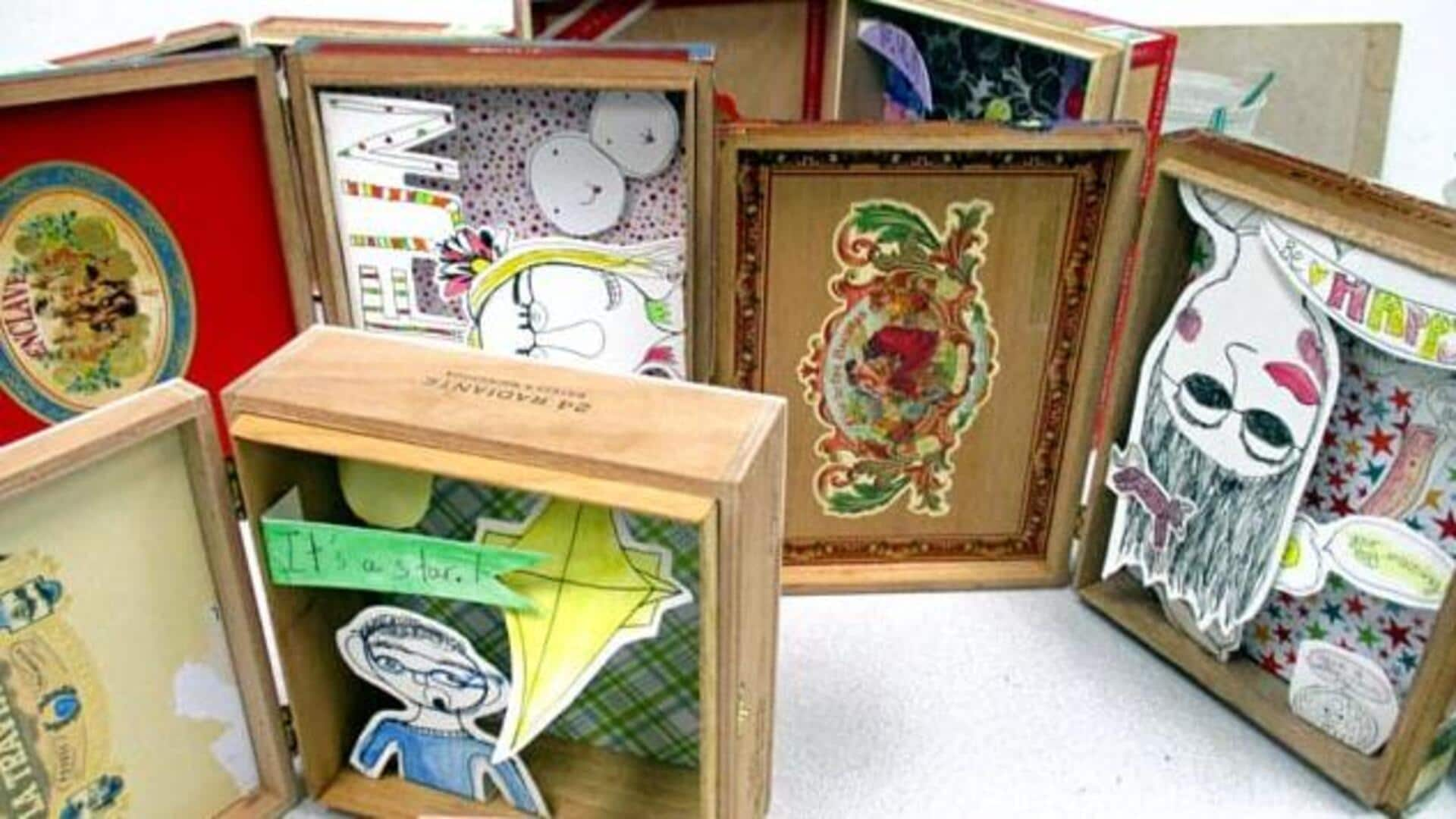
Crafting stories through shadow box artistry
What's the story
Shadow box artistry is a beautiful and unique way to tell visual stories, combining the depth of sculpture with the narrative flow of painting.
This art form gives artists the freedom to create three-dimensional scenes within a box, using objects, cutouts, and various materials.
It's a fun and engaging way to preserve moments, memories, or stories in a tangible form that viewers can explore and interpret.
Theme selection
Choosing the right theme
Selecting a theme is the most important step in creating a shadow box.
Themes can be individual-specific (weddings, birthdays) or generic (seasons, historical events).
Choosing a theme that resonates with you or your intended audience is crucial, as it sets the tone for the whole piece.
A well-chosen theme adds depth and meaning, making the shadow box more impactful and significant.
Materials
Gathering materials creatively
Shadow box art is all about embracing the wide world of materials.
Photos, paper cutouts, fabric scraps, cool leaves or flowers you found on a walk, tiny objects that fit your theme—the sky's the limit.
Hit up thrift stores, go for nature walks, and keep an eye out for interesting items.
Each piece you choose should add to your theme, helping to create a story within the box.
Depth mastery
Mastering depth and dimension
A crucial part of shadow box art is creating depth. You can do this by placing materials at different distances from the glass.
Use foam spacers or cardboard to raise elements and create a sense of depth.
This method makes the scene come alive, like a miniature world inside a frame.
Lighting techniques
Lighting: Bringing your shadow box to life
Adding lights to your shadow box can significantly amplify the mood and atmosphere.
Tiny LED lights or fairy lights can be tucked behind elements or positioned strategically to illuminate specific parts of your scene.
Think about how shadows will interact within your box; they can add a whole new layer of depth and mystery.
Assembly advice
Practical tips for assembly
Start by arranging all items on a flat surface to determine their layout before adhering them inside the frame.
Use glue dots or double-sided tape for lighter objects and epoxy for heavier ones.
It's important to make sure there's enough room between the glass front and the tallest item in your shadow box to avoid any contact.
This method allows for rearrangements and guarantees a harmonious composition.